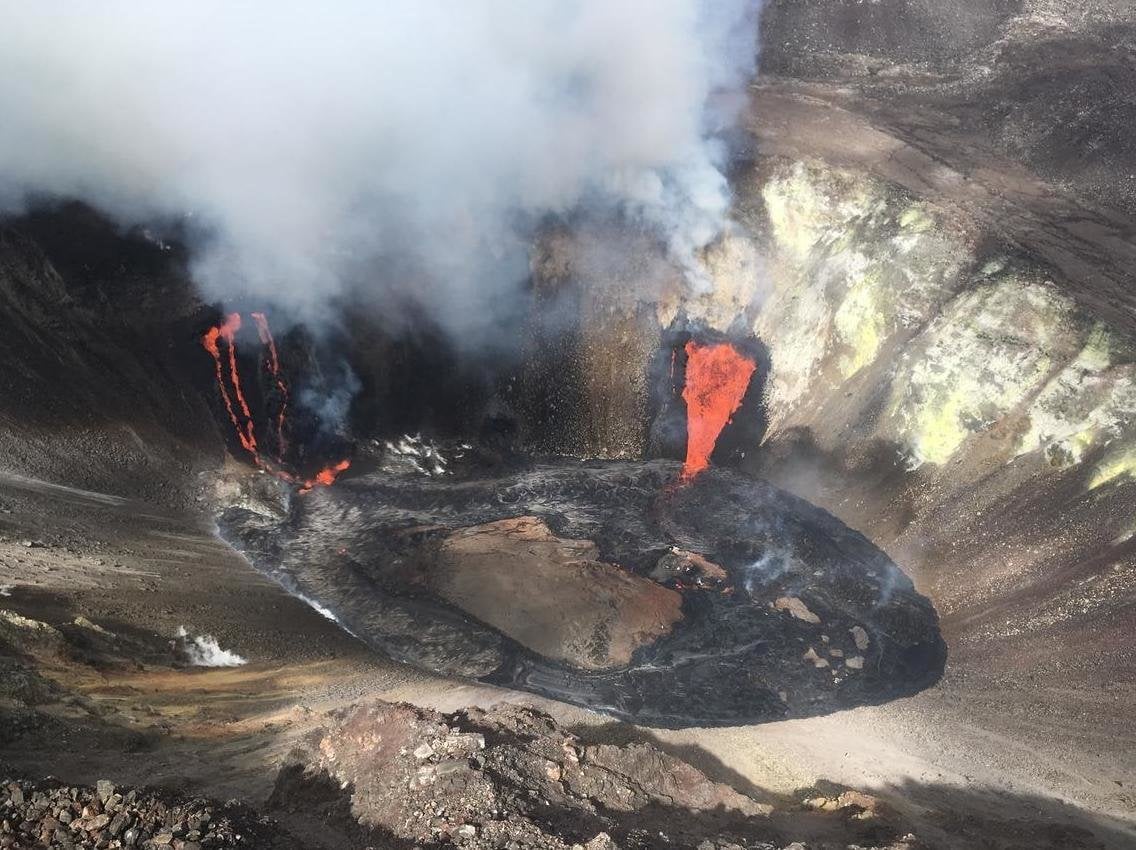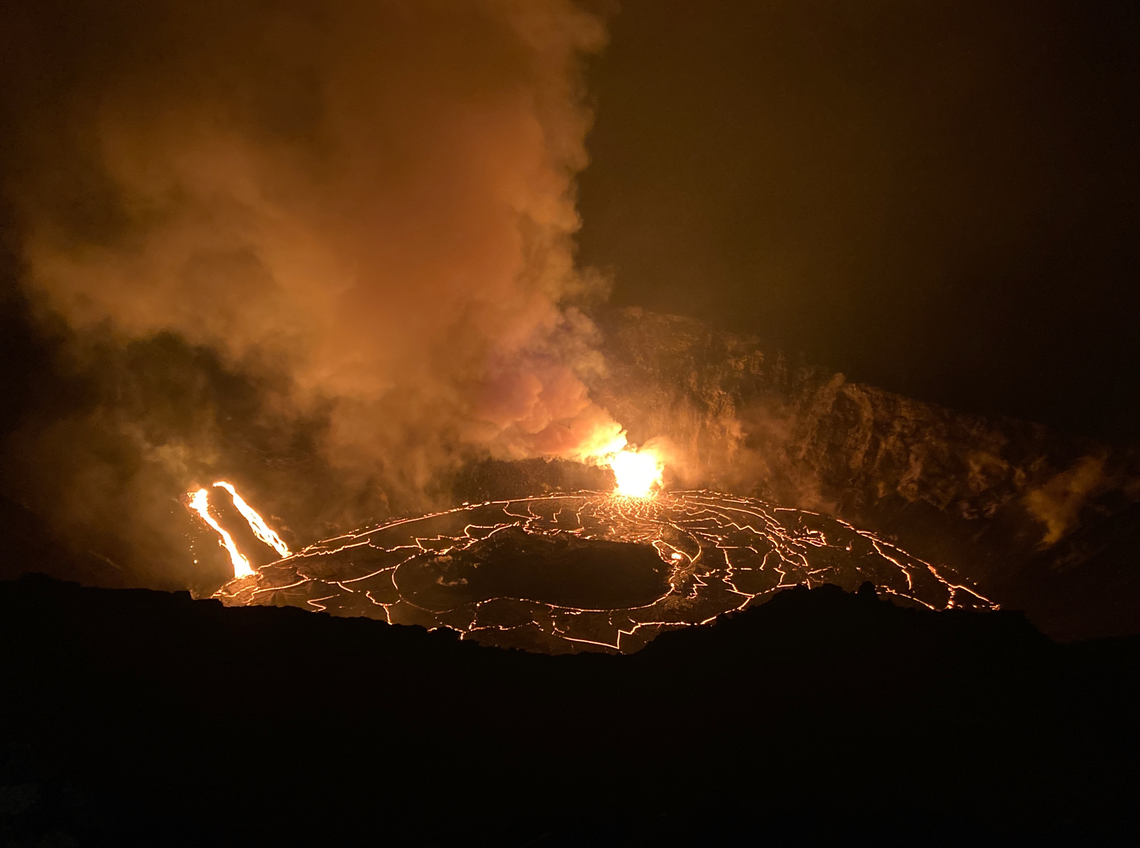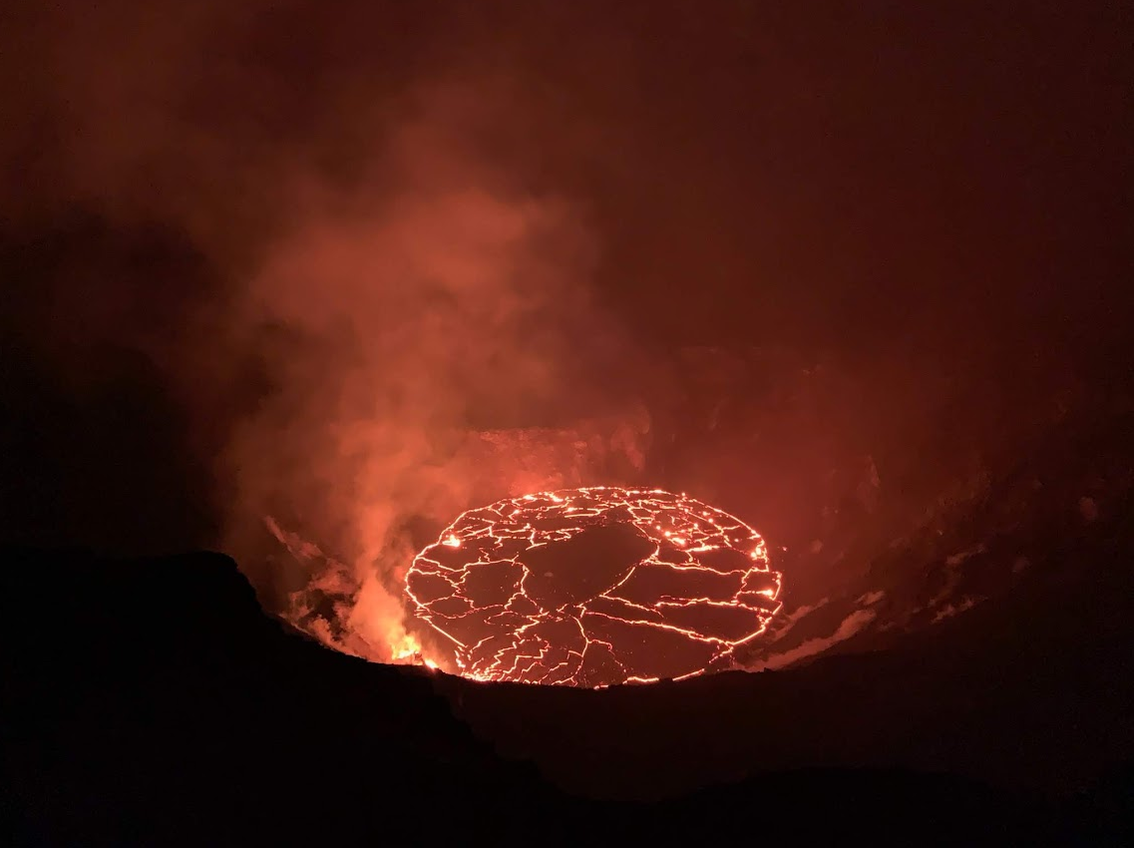
After erupting almost continuously for over three decades — from 1983 to 2018 — Hawaii's Kilauea volcano finally seemed to lose steam, producing no lava for nearly two years. The slumber ended on the night of December 20, 2020, when the active volcano began spewing out dramatic lava fountains and giant puffs of gas and steam from a fissure in the northwest wall of the Halemaʻumaʻu crater.

As of December 31, 2020, the volcano had ejected over 27 million cubic meters (953 million cubic feet) of molten rock — enough to fill more than 8,000 Olympic-sized swimming pools — and replaced the existing water lake with a nearly 600-foot-deep lava lake. Fortunately, the magma is contained inside the volcano's crater and does not pose a risk to people or property as it did in 2018, when the molten rock flowed through a residential neighborhood, destroying over 700 homes.
Residents have, however, been asked to limit outdoor activities in areas with high volcanic smog levels. Commonly known as vog, it is a form of air pollution created when sulfur dioxide and other pollutants emitted from volcanic activity interact chemically with atmospheric moisture, oxygen, dust, and sunlight. While not deadly, it can irritate skin and the tissues and mucous membranes of the eyes, nose, and throat, and it can be particularly harmful to individuals with preexisting respiratory conditions.

While Kilauea is now recognized as one of the world's youngest and most active volcanoes, it was initially believed to be an offshoot of a bigger volcano. It was only after researchers discovered a magma plumbing system extending over 37 miles (60 km) inside its crater in 1884 that the volcano was finally accepted as a separate entity.

Many locals believe that Kilauea’s eruptions are caused by Pele, a Hawaiian volcano goddess who resides in the mountain. According to popular folklore, the deity — one of six daughters and seven sons born to ancient Earth goddess Haumea and universe creator Kane Milohai — was exiled to Hawaii from Tahiti. Upon arrival, she went on a rampage, creating destructive fire pits and volcanoes. While Pele was killed during an epic battle with her sister Nāmaka on the island of Maui, her spirit lives on inside the Halemaʻumaʻu crater.
Resources: Phys.org, NPR.com, USGS.gov
